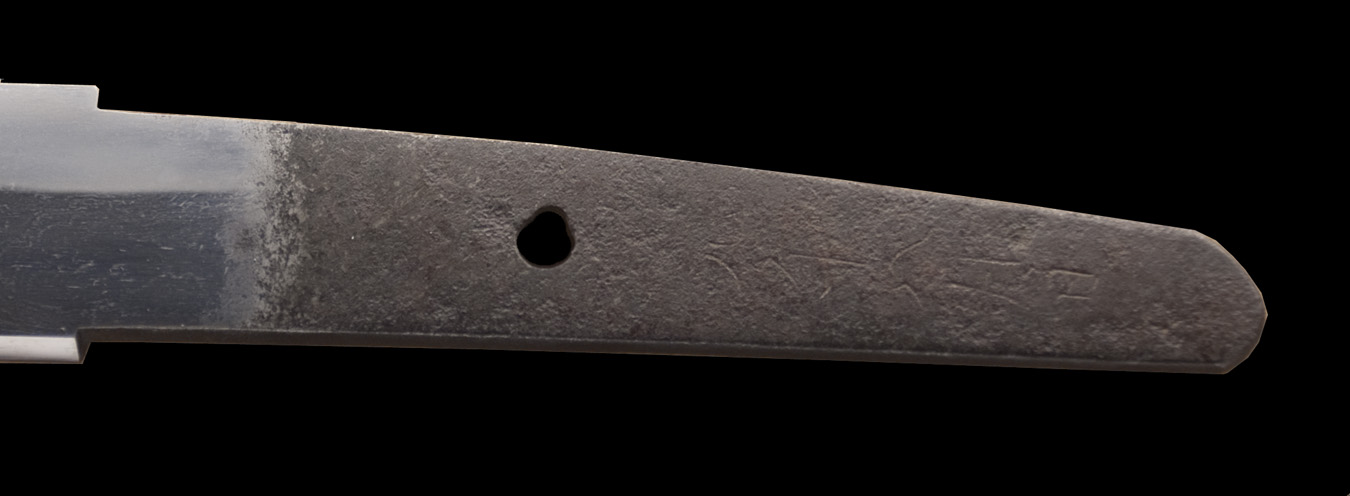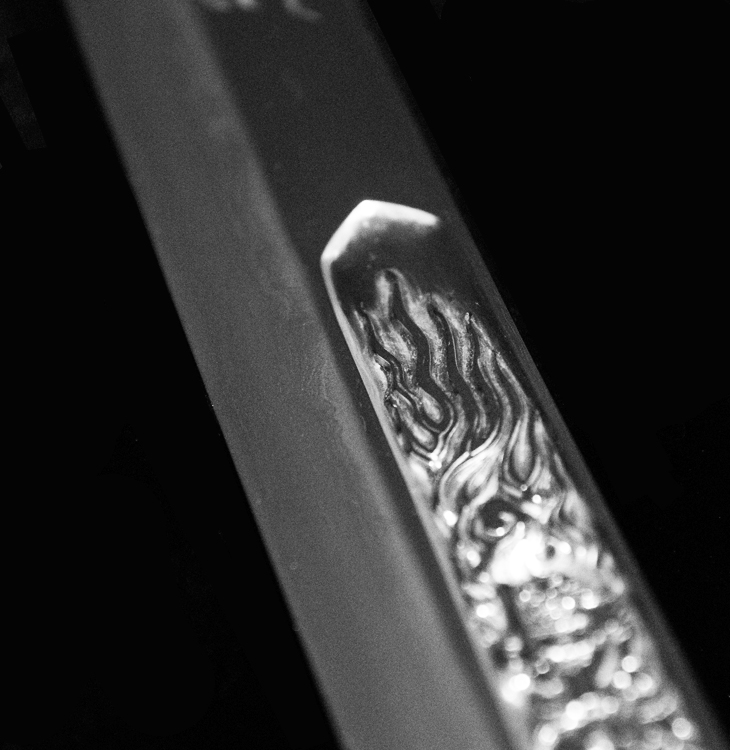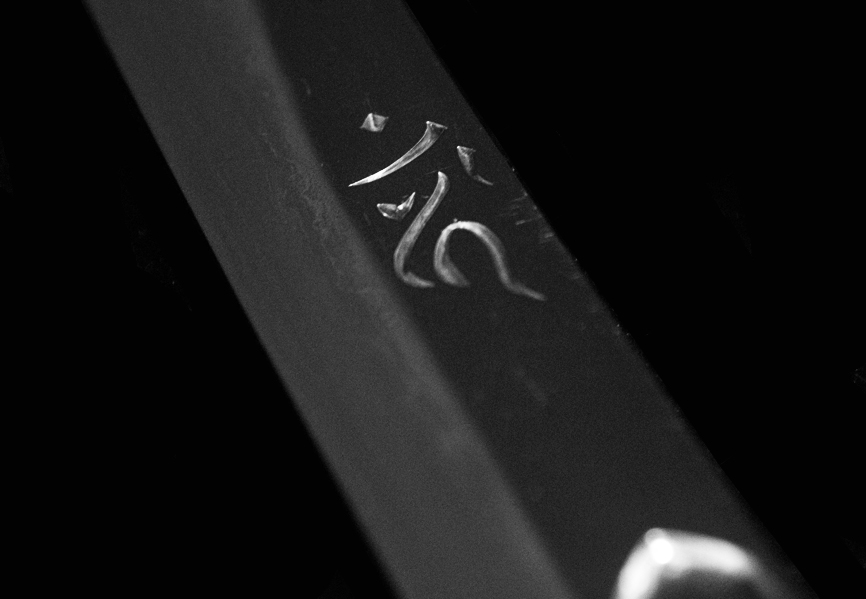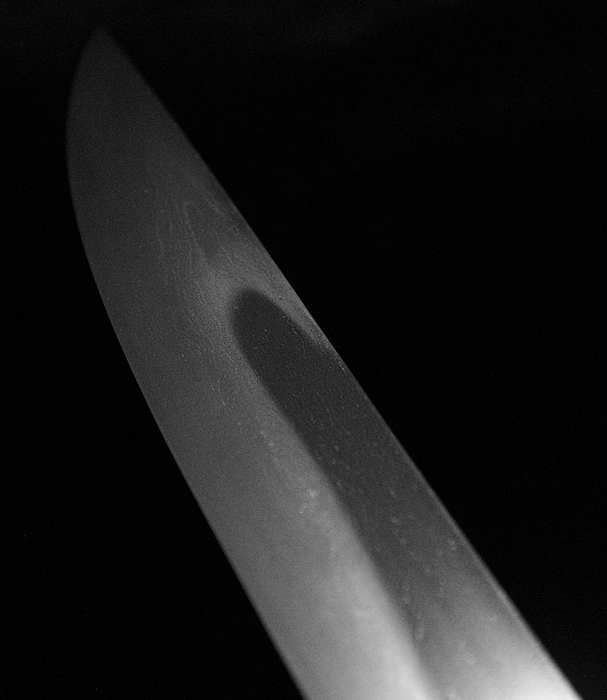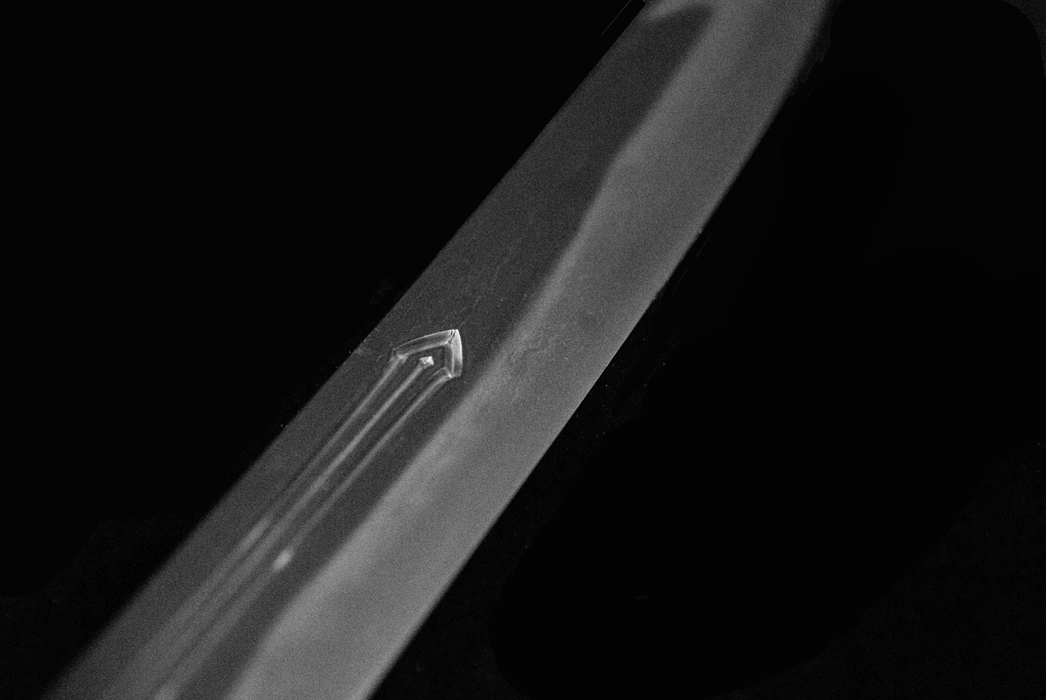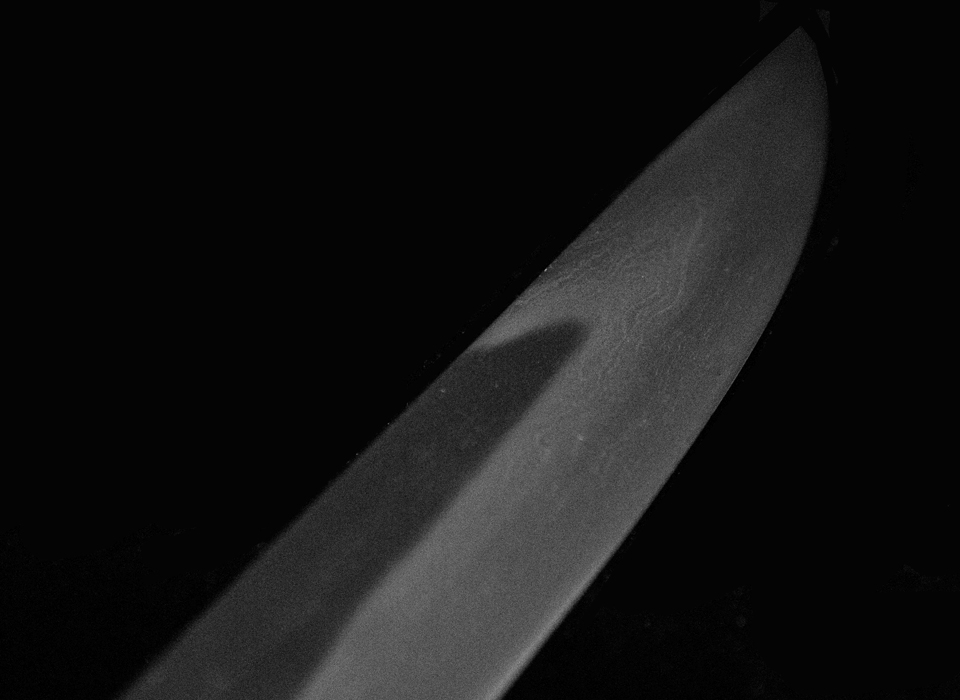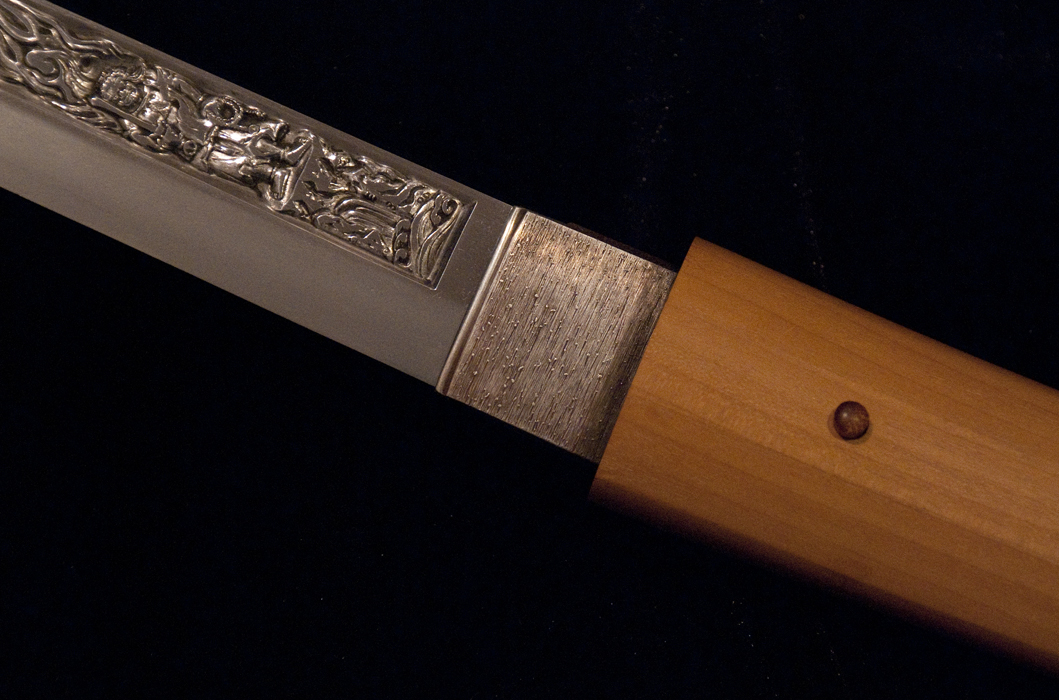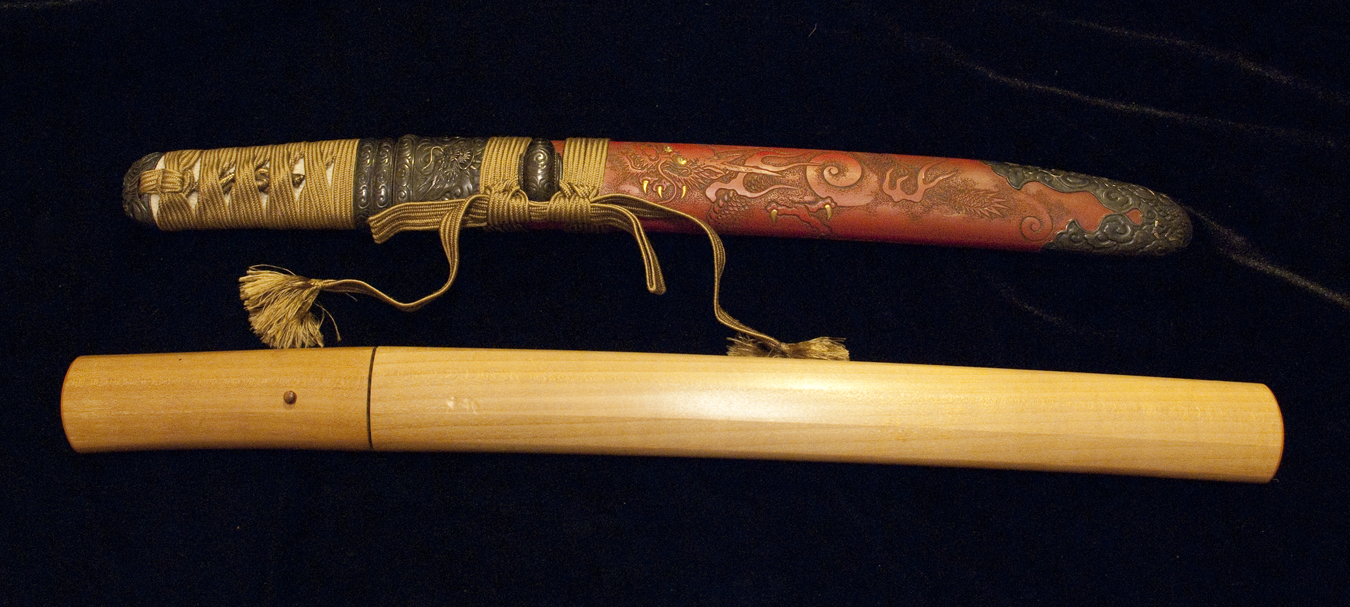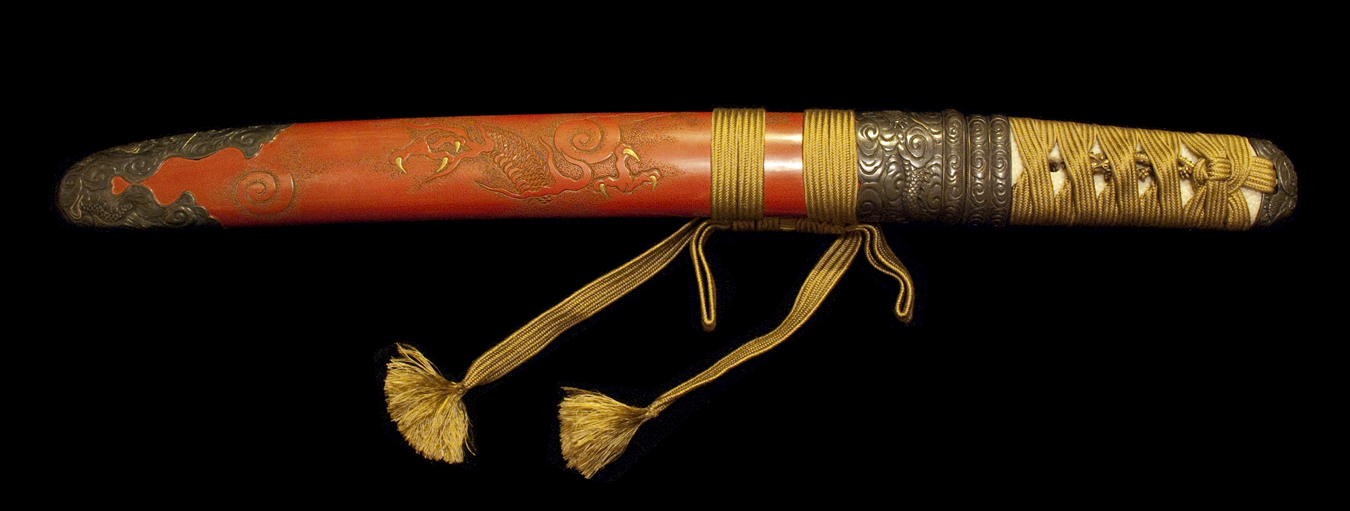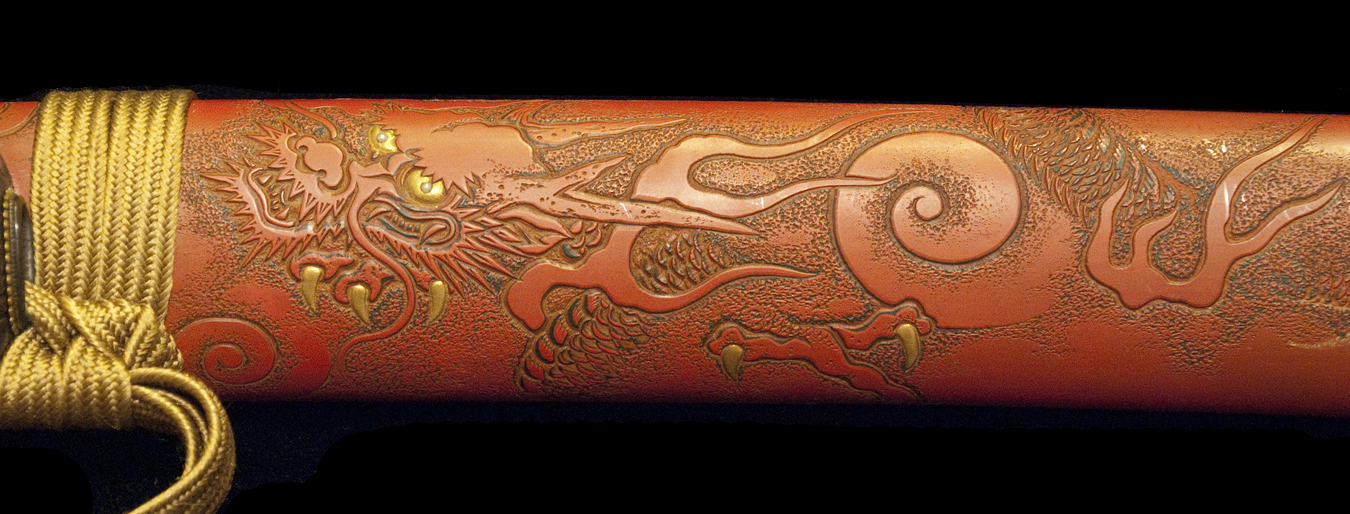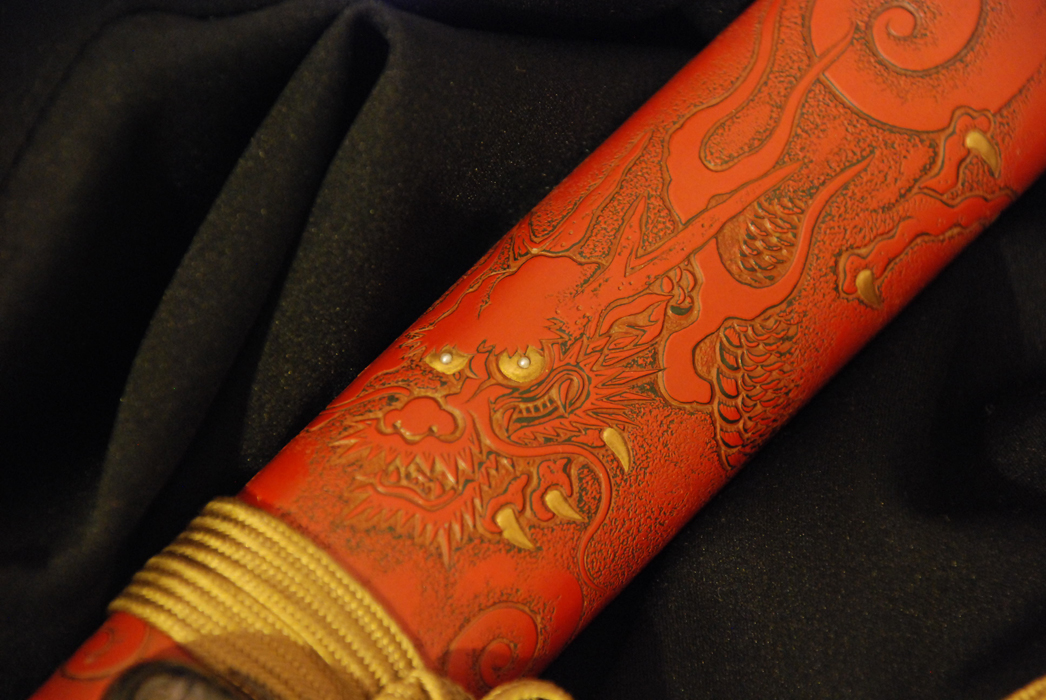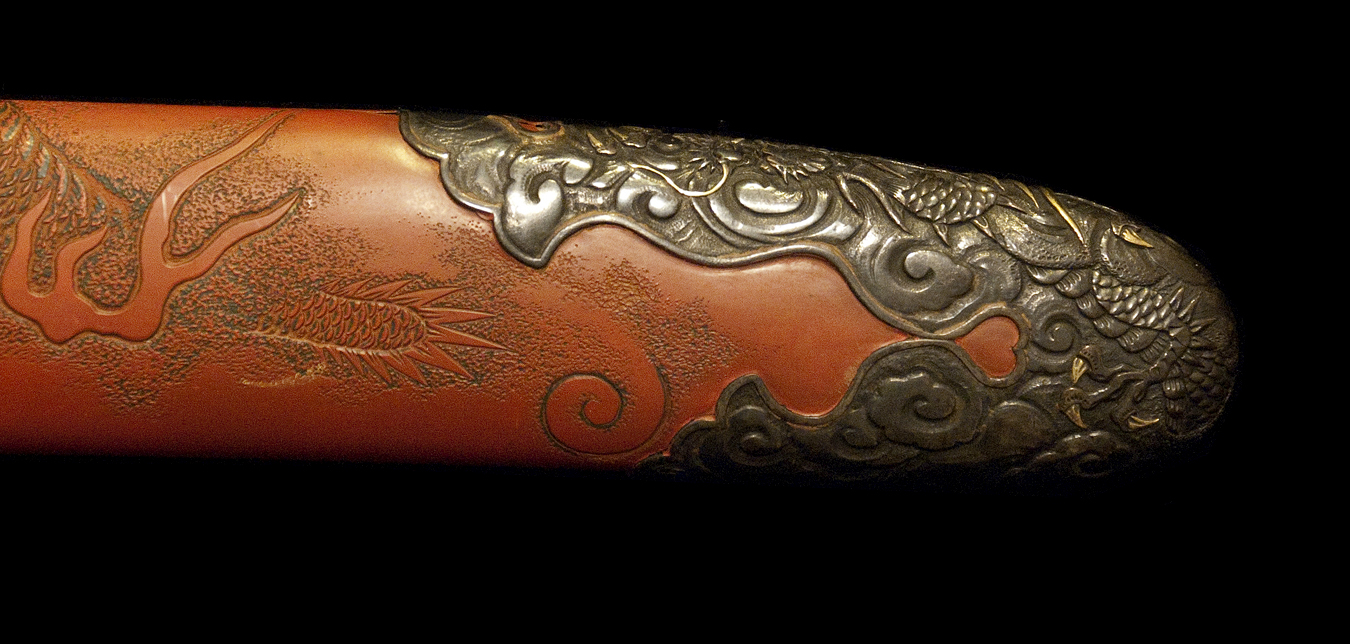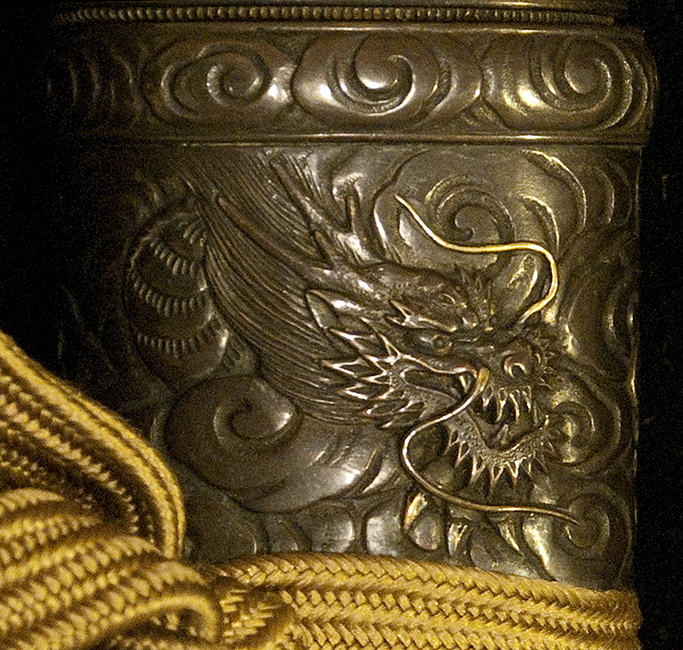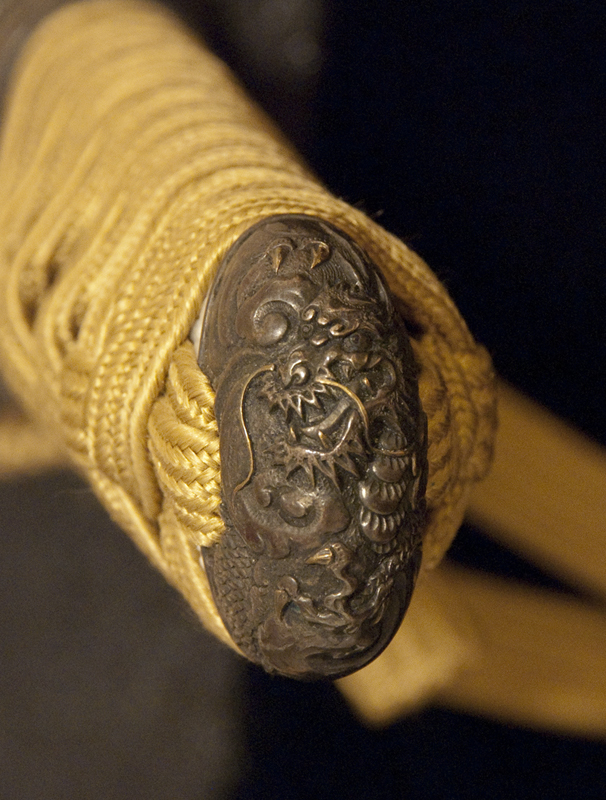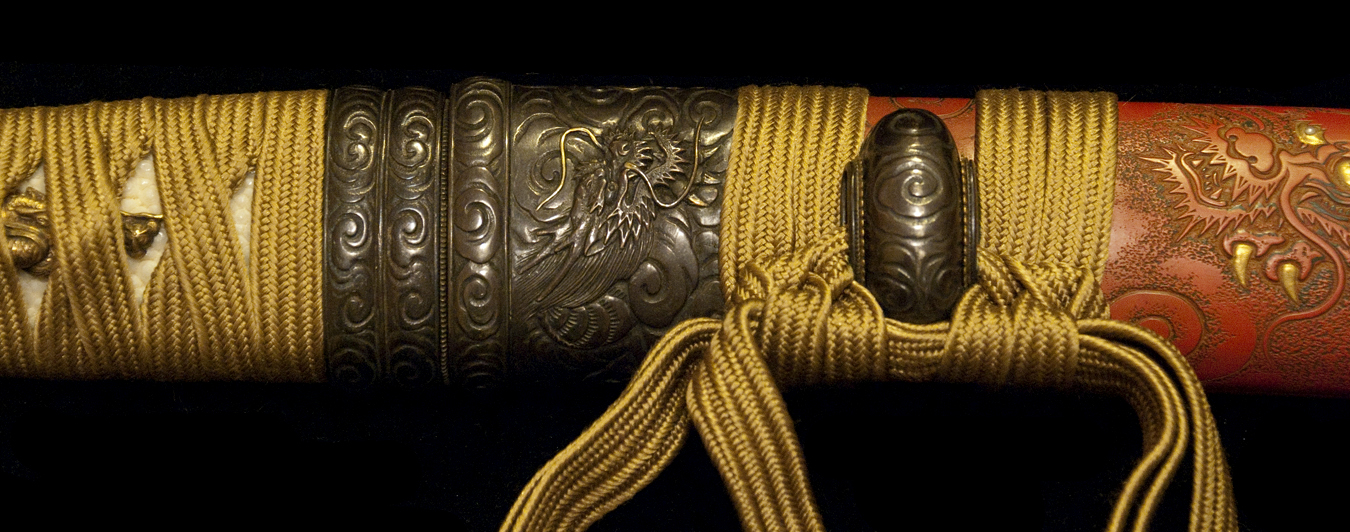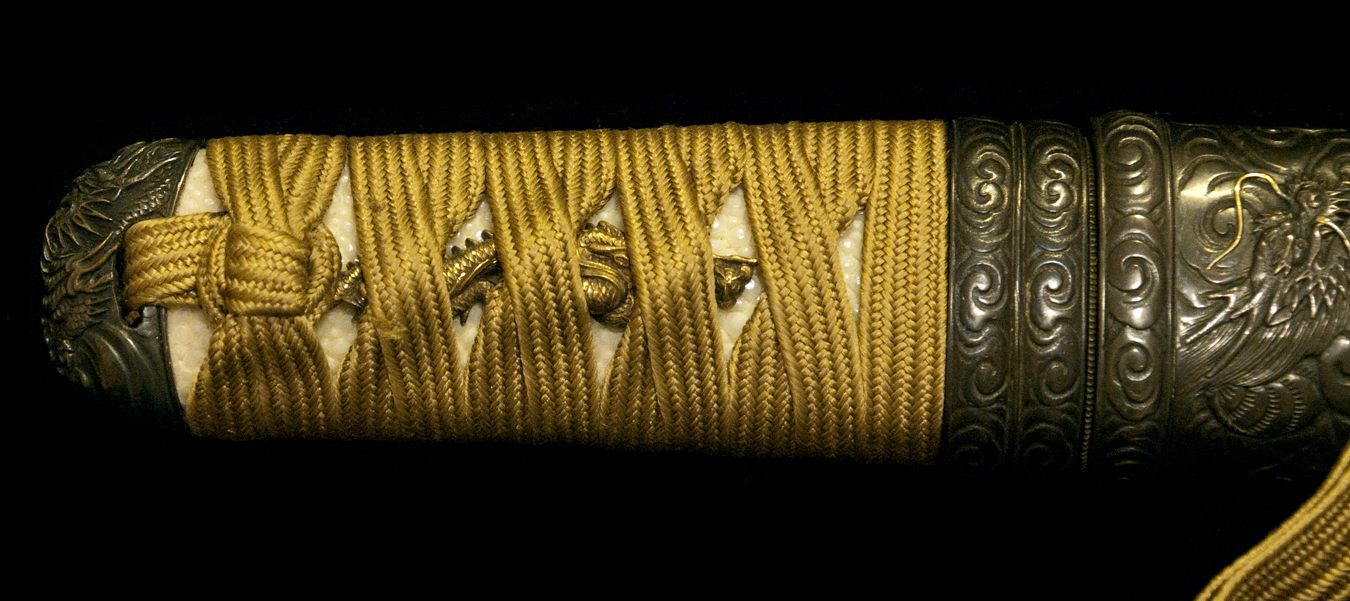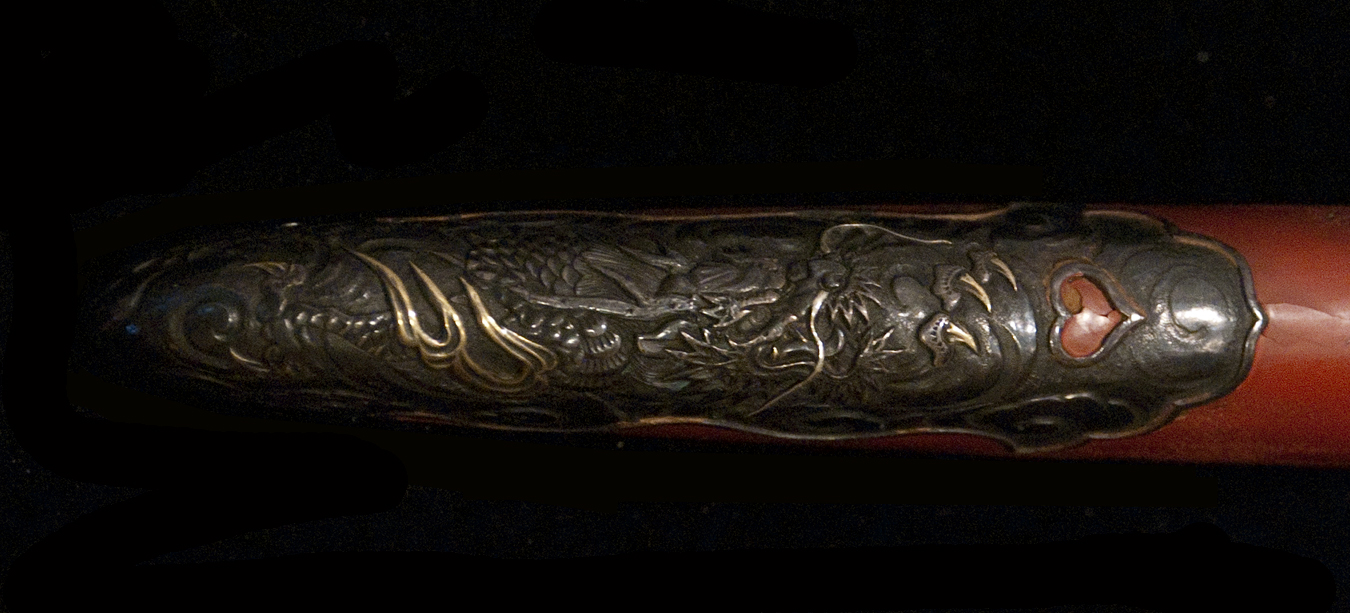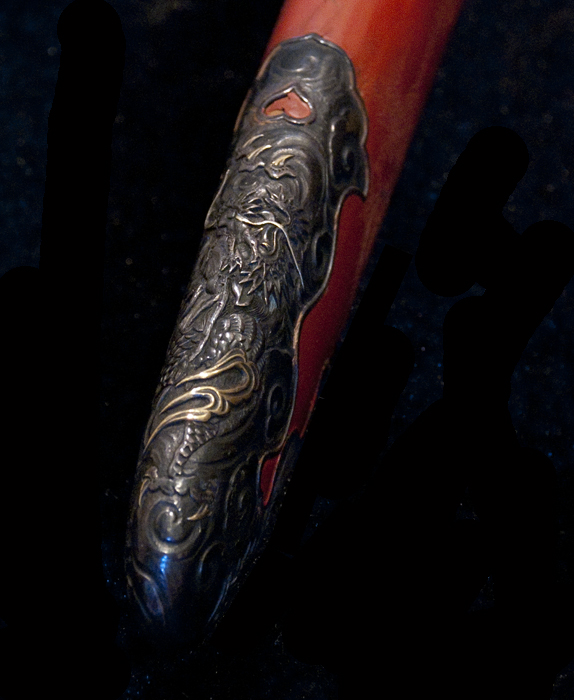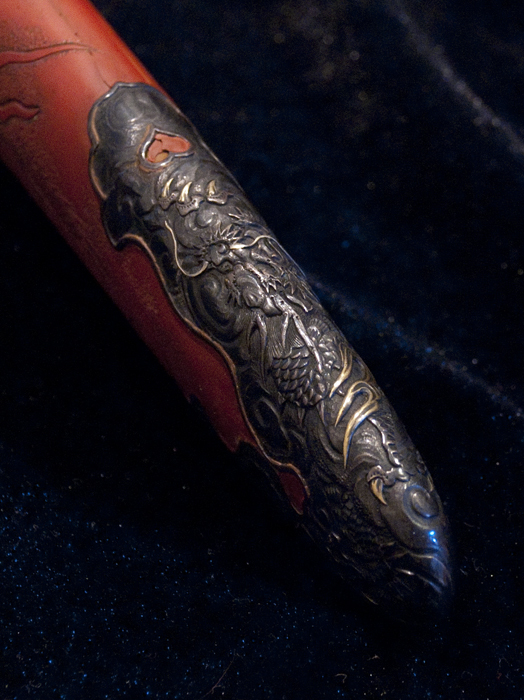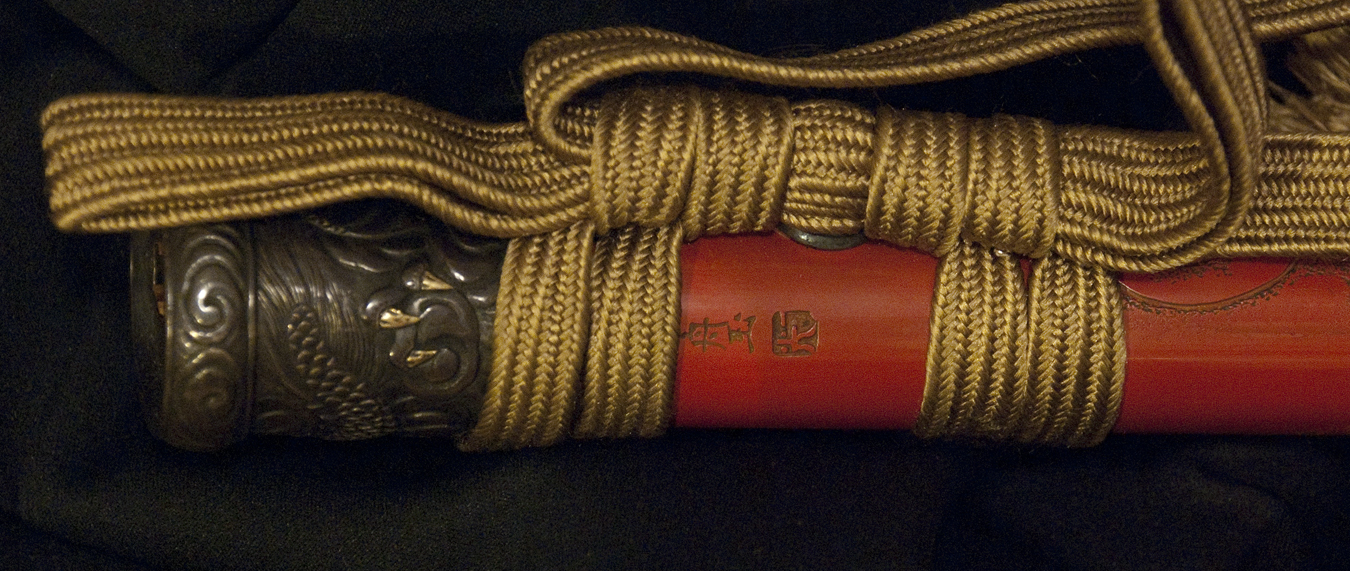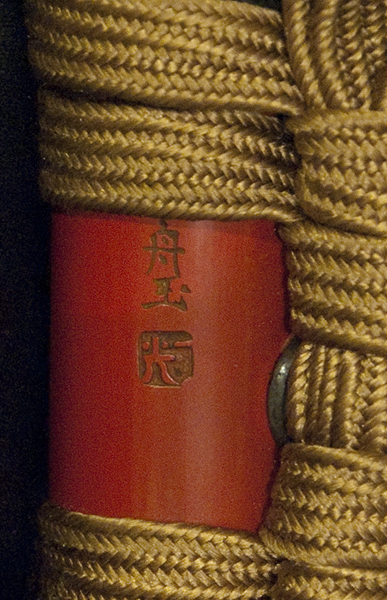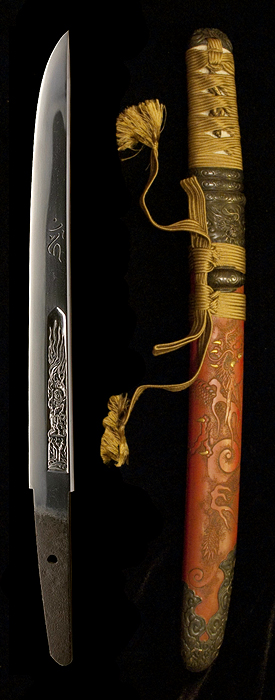|
| |||||||||||||||||||||||||||||||||
Hamon : Gunome midare based on hiro suguha. The hamon is ko nie deki but is fully entwined in nioi as well. There are many ashi. Nijuba is present. Kinsuji and inazuma can been seen throughout the hamon.
Boshi : The nioiguchi of the boshi is especially thick. It is packed with inazuma and kinsuji. Omaru with a kaeri.
Kitae : Itame with masame mixed in. The hada pattern is prominent and clear. There is fine mist-like ji-nie covering the ji. There is a touch of tobiyaki near the boshi and there is light muneyaki.
Aboout this sword : This is a very special tanto. One can tell immediately that it is no ordinary item. This would have been a prized possession of a high ranking Samurai or the treasure of a man of considerable means. This is certainly on the same level as items we have studied from Daimyo collections. The inscription on the blade (Yoshimitsu) is gimei (fake). It is very important to understand the context of this gimei. This is a old gimei and has quite different feeling than a turn of the century tourist item or modern fake. Awataguchi Yoshimitsu has been a prestigious name for many centuries. Every Samurai family had to have a Masamune, Go and Yoshimtisu etc.... A great many fine blades bare false names of these makers on their nakago because of the demand. It is easy to imagin that if a 17th century retainer was ordered by a superior to procure a Yoshimitsu for the Diamyo, filling the request would have been more important than kantei questions. We also have to remember that even highly educated people of old Japan did not know much if anything about sword appraisal and that the quality of the blade and its decoration would have been more likely the most important parameters of selection for a gift presented to a superior or Lord. Our kantei of this blade is that it is a early Shinto work. It has dark steel like Echizen mono and the hamon similar to what we have seen in the work of the top examples of the Yasutsugu school. Another observation is that of a Horikawa flavor in the Horimono and also in the jigane. It is well known that both these areas produced high ranking smiths who were famously skilled at making reproductions of old swords. The workmanship of the blade is impressive. The delicate nie hataraki in the hamon and fully controlled ko-nie are what is expected of Jo Saku workmanship. The boshi is boldly packed with nie hataraki and of especially fine quality. The horimono of Fudou, bonji and a ken are well carved and compliment the blade wonderfully. The are no kizu and the sword is healthy.
The koshirae for this tanto is absolutely breathtaking. All of the tosogu are matching takabori of cloud dragons. The depth and quality of the carving shows the skill of a master craftsman. The tosogu is shibuichi with gold nunome and the menuki are gold. The lacquered saya is a special item of fine quality and empirical importance. It is signed "Ikko Shugyoku". This is an extremely rare example of carved lacquer. The subject mater is of a cloud dragons and again the skill level is remarkable The dragon has actual pearls for the pupils in his eyes. The character and presence of the dragon is so fantastic. Please see the many photos below. One could say that the main criteria of quality for late Edo kinko are the detail of the carving and the facial expressions of the portrayed subject mater. This koshirae is of the highest quality in both regards.
Price: $9500







